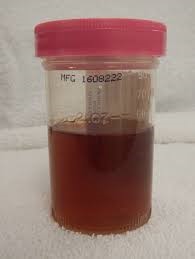Introduction
- Hematuria is the presence of blood or blood cells in the urine.
- It can be classified as gross hematuria, which is visible to the naked eye, or microscopic hematuria, which is detected only by laboratory tests.
- Hematuria can be a sign of various urinary tract disorders, such as infections, stones, tumors, trauma, or systemic diseases.
- Hematuria is not a disease in itself but rather a symptom that may signal an array of diverse and often complex medical conditions affecting the urinary system or other bodily systems.
- The discovery of blood in the urine, whether visible to the naked eye (gross hematuria) or only detectable through microscopic examination (microscopic hematuria), can evoke a range of emotions and concerns.
- While it may sometimes result from benign and self-limiting causes, hematuria can also serve as a red flag for potentially serious and life-altering conditions, including urinary tract infections, kidney disease, bladder cancer, or systemic disorders affecting the body's coagulation system.

Nursing Test Bank
Naxlex Comprehensive Predictor Exams
Questions on Introduction
Correct Answer is B
Explanation
Correct Answer is B
Explanation
Correct Answer is B
Explanation
Correct Answer is B
Explanation
Correct Answer is B
Explanation
Correct Answer is B
Explanation
Correct Answer is B
Explanation
Correct Answer is B
Explanation
Correct Answer is B
Explanation
Correct Answer is D
Explanation
Correct Answer is B
Explanation
Correct Answer is B
Explanation
Correct Answer is B
Explanation
Correct Answer is C
Explanation
Correct Answer is B
Explanation
Search Here
Related Topics
More on Nursing
- Pathophysiology of the Musculoskeletal System
- Pathophysiology of the Reproductive System
- Pathophysiology of the integumentary system
- Pathophysiology of the Hematologic System
- Pathophysiology of the respiratory system
- Pathophysiology of the Gastrointestinal System
- Pathophysiology of the Nervous System
- Basic Concepts of Pathophysiology
Free Nursing Study Materials
Access to all study guides and practice questions for nursing for free.
- Free Nursing Study Trials
- Free Nursing Video tutorials
- Free Nursing Practice Tests
- Free Exam and Study Modes
- Free Nursing Revision Quizlets
